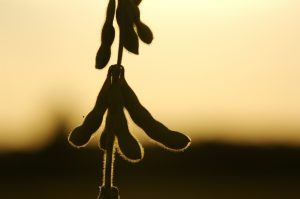As farmers are in the middle of this planting season, Mother Nature has already thrown some major curve balls. Predicted temperatures in the low 90s the week of May 8 in many parts of the country, combined with intense or recurrent rainfall could result in damage to corn and soybean crops from ponding, saturated soils and flooding, says University of Missouri Extension agronomist Bill Wiebold.
Survival of submerged corn and soybean seedlings depends on seed quality, flood duration, water temperatures, how fast fields dry, and location of the growing point in the seedlings, says Wiebold. Roots grow even in cool conditions, and leaf growth comes later. However, waterlogged soil stresses plants and damage varies in fields and soil types.
Low-lying areas collect water and “pond.” Ponding may not always be visible, Wiebold says. Waterlogging may be under the soil’s surface as it reaches field capacity. Some soil types are more prone to waterlogging, including claypan soils and soils high in clay.
Water aggregating in spaces between soil particles can damage germinating seeds and developing seedlings. Flooded plants deplete oxygen in the soil in two to four days. Moving water, which allows some oxygen to get to plants, may result in less injury than still water, Wiebold says.

Generally, soybeans tolerate flooding better than corn. In both damaged corn and soybean, expect stand reduction, loss of vigor, and lower yield. Root damage impairs the plant’s ability to take up water and tolerate drought stress. Cooler weather improves chances for plant survival. Young plants can survive about two days when temperatures exceed 70 F. They can survive four days when temperatures are in the mid-60s or below.
Survival also depends on how much of the plant is submerged. Soybean plants exhibit epigeal emergence, in which the growing point is at the tip of the stem, which elongates above the ground, says Wiebold. This can be an advantage because the growing point might remain above the water surface. Corn plants undergo hypogeal emergence, so the growing point stays below ground for at least three weeks. In waterlogged soils, oxygen is not available where most needed.
Producers should look for new leaf development three to five days after water recedes and examine seedlings for disease. Look for rotted or discolored seedlings and roots, and for damping-off symptoms, says Wiebold. Cool, wet fields create favorable conditions for soil pathogens, putting some plants at greater risk of soil-borne diseases.
Water damage and disease may result in poor or uneven stands. For guidance in decision-making, Wiebold recommends Corn and Soybean Replant Decisions, available for free download.


